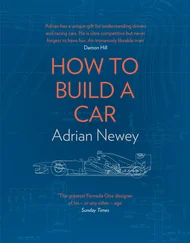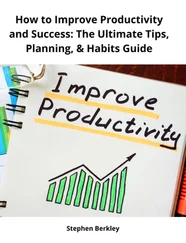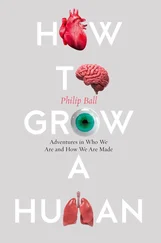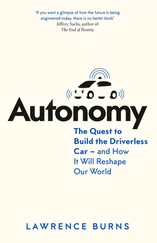Eyal, Nir - Hooked - How to Build Habit-Forming Products
Здесь есть возможность читать онлайн «Eyal, Nir - Hooked - How to Build Habit-Forming Products» весь текст электронной книги совершенно бесплатно (целиком полную версию без сокращений). В некоторых случаях можно слушать аудио, скачать через торрент в формате fb2 и присутствует краткое содержание. Год выпуска: 2014, Издательство: Nir Eyal, Жанр: Старинная литература, на английском языке. Описание произведения, (предисловие) а так же отзывы посетителей доступны на портале библиотеки ЛибКат.
- Название:Hooked: How to Build Habit-Forming Products
- Автор:
- Издательство:Nir Eyal
- Жанр:
- Год:2014
- ISBN:нет данных
- Рейтинг книги:5 / 5. Голосов: 1
-
Избранное:Добавить в избранное
- Отзывы:
-
Ваша оценка:
- 100
- 1
- 2
- 3
- 4
- 5
Hooked: How to Build Habit-Forming Products: краткое содержание, описание и аннотация
Предлагаем к чтению аннотацию, описание, краткое содержание или предисловие (зависит от того, что написал сам автор книги «Hooked: How to Build Habit-Forming Products»). Если вы не нашли необходимую информацию о книге — напишите в комментариях, мы постараемся отыскать её.
Hooked: How to Build Habit-Forming Products — читать онлайн бесплатно полную книгу (весь текст) целиком
Ниже представлен текст книги, разбитый по страницам. Система сохранения места последней прочитанной страницы, позволяет с удобством читать онлайн бесплатно книгу «Hooked: How to Build Habit-Forming Products», без необходимости каждый раз заново искать на чём Вы остановились. Поставьте закладку, и сможете в любой момент перейти на страницу, на которой закончили чтение.
Интервал:
Закладка:
Through my studies and discussions with entrepreneurs at today’s most successful habit-forming companies, I’ve distilled this process into what I call “Habit Testing.” It is a process inspired by the build-measure-learn methodology championed by the lean startup movement. Habit Testing offers insights and actionable data to inform the design of habit-forming products. It helps clarify who your devotees are, what parts of your product are habit-forming (if any), and why those aspects of your product are changing user behavior.
Habit Testing does not always require a live product; however, it can be difficult to draw clear conclusions without a comprehensive view of how people are using your system. The following steps assume you have a product, users, and meaningful data to explore.
Step 1: Identify
The initial question for Habit Testing is “Who are the product’s habitual users?” Remember, the more frequently your product is used, the more likely it is to form a user habit.
First, define what it means to be a devoted user. How often “should” one use your product? The answer to this question is very important and can widely change your perspective. Publicly available data from similar products or solutions can help define your users and engagement targets. If data is not available, educated assumptions must be made — but be realistic and honest.
If you are building a social networking app like Twitter or Instagram, you should expect habitual users to visit the service multiple times per day. On the other hand, you should not expect users of a movie recommendation site like Rotten Tomatoes to visit more than once or twice a week (since their visits will come on the heels of seeing a movie or researching one to watch). Don’t come up with an overly aggressive prediction that only accounts for uber-users; you are looking for a realistic guess to calibrate how often typical users will interact with your product.
Once you know how often users should use your product, dig into the numbers and identify how many and which type of users meet this threshold. As a best practice, use cohort analysis to measure changes in user behavior through future product iterations.
Step 2: Codify
Hopefully you’ve identified a few users who meet the criteria of habitual users. But how many users are enough? My rule of thumb is five percent. Though your rate of active users will need to be much higher to sustain your business, this is a good initial benchmark.
However, if at least five percent of your users don’t find your product valuable enough to use as much as you predicted they would, you may have a problem. Either you identified the wrong users or your product needs to go back to the drawing board. But if you have exceeded that bar and identified your habitual users, the next step is to codify the steps they took using your product to understand what hooked them.
Users will interact with your product in slightly different ways. Even if you have a standard user flow, the way users engage with your product creates a unique fingerprint. Where users are coming from, decisions made when registering, and the number of friends using the service, are just a few of the behaviors that help create a recognizable pattern. Sift through the data to determine if similarities emerge. You’re looking for a “Habit Path,” — a series of similar actions shared by your most loyal users.
For example, in its early days, Twitter discovered that once new users followed 30 other members, they hit a tipping point which dramatically increased the odds they would keep using the site. [cxxx]
Every product has a different set of actions that devoted users take; the goal of finding the Habit Path is to determine which of these steps is critical for creating devoted users so that you can modify the experience to encourage this behavior.
Step 3: Modify
Armed with new insights, it is time to revisit your product and identify ways to nudge new users down the same Habit Path taken by devotees. This may include an update to the registration funnel, content changes, feature removal, or increased emphasis on an existing feature. Twitter used the insights gained from the previous step to modify its on-boarding process, encouraging new users to immediately begin following others.
Habit Testing is a continual process you can implement with every new feature and product iteration. Tracking users by cohort and comparing their activity to habitual users should guide how products evolve and improve.
Discovering Habit-forming Opportunities
The Habit Testing process requires the product designer to have an existing product to test. But where might you look to find potentially habit-forming experiences ripe for new technological solutions?
When it comes to developing new products, there are no guarantees. Along with creating an engaging product as described in this book, startups must also find a way to monetize and grow. Although this book does not cover business models for delivering customer value or methods for profitable customer acquisition, both are necessary components of any successful business. Several things must go right for a new company to succeed, and forming user habits is just one of them.
As we saw in chapter six, being a “facilitator” is not only a moral imperative, it also makes for better businesses practices. Creating a product the designer uses and believes materially improves people’s lives increases the odds of delivering something people want. Therefore, the first place for the entrepreneur or designer to look for new opportunities is in the mirror. Paul Graham advises entrepreneurs to leave the sexy-sounding business ideas behind and instead build for their own needs: “Instead of asking ‘what problem should I solve?’ ask ‘what problem do I wish someone else would solve for me?’” [cxxxi]
Studying your own needs can lead to remarkable discoveries and new ideas because the designer always has a direct line to at least one user — himself or herself. For example, Buffer, a service for posting updates to social networks, was inspired by its founder’s insightful observations of his own behavior.
Buffer was founded in 2010 and is now used by over 1.1 million people. [cxxxii]Its founder, Joel Gascoigne, described the company’s inception in an interview. [cxxxiii]“The idea for Buffer came to me after I had been using Twitter for about 1.5 years. I had started to share links to blog posts and quotes I found inspiring, and I found that my followers seemed to really like these types of tweets. I would often get retweets or end up having a great conversation around the blog post or quote. That's when I decided I wanted to share this kind of content more frequently, because the conversations being triggered were allowing me to be in touch with some super smart and interesting people.”
Gascoigne continues, “So, with my goal of sharing more blog posts and quotes, I started to do it manually. I quickly realized that it would be far more efficient to schedule these tweets for the future, so I started to use a few available Twitter clients to do this. The key pain I ran into here was that I would have to choose the exact date and time for the tweet, and in reality all I wanted to do was to tweet ‘five times per day.’ I just wanted the tweets to be spread out so I didn't share them all at the same time when I did my daily reading. For a while, I used a notepad and kept track of when I had scheduled tweets, so that I could try and tweet five times per day. This became quite cumbersome, and so my idea was born: I wanted to make scheduling tweets 'x times a day' as easy as tweeting regularly.”
Gascoigne’s story is a classic example of a founder scratching his own itch. As he used existing solutions, he recognized a discrepancy in what they offered and the solution he needed. He identified where steps could be removed from other products he used and built a simpler way to get his job done.
Читать дальшеИнтервал:
Закладка:
Похожие книги на «Hooked: How to Build Habit-Forming Products»
Представляем Вашему вниманию похожие книги на «Hooked: How to Build Habit-Forming Products» списком для выбора. Мы отобрали схожую по названию и смыслу литературу в надежде предоставить читателям больше вариантов отыскать новые, интересные, ещё непрочитанные произведения.
Обсуждение, отзывы о книге «Hooked: How to Build Habit-Forming Products» и просто собственные мнения читателей. Оставьте ваши комментарии, напишите, что Вы думаете о произведении, его смысле или главных героях. Укажите что конкретно понравилось, а что нет, и почему Вы так считаете.












